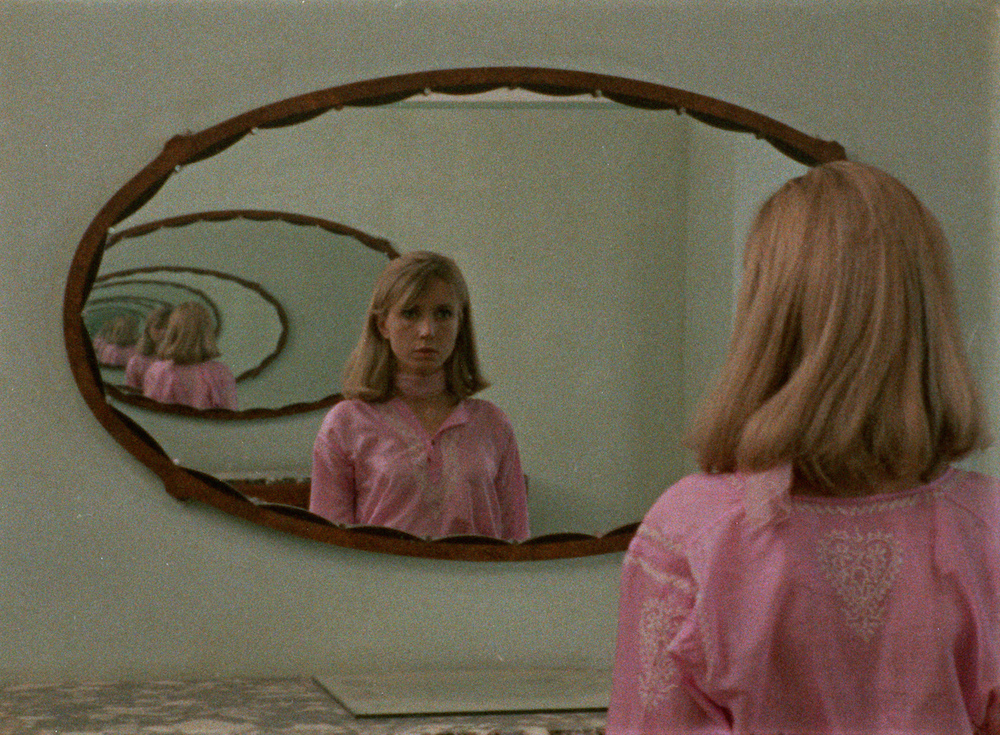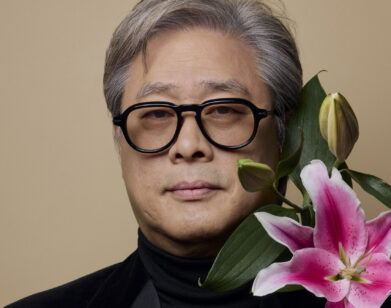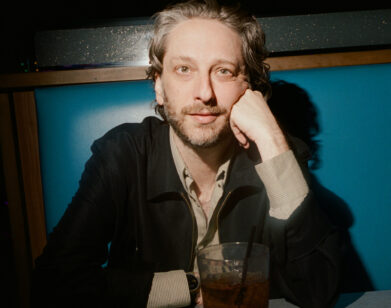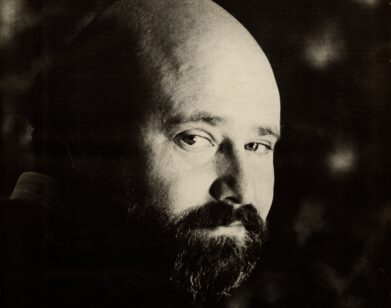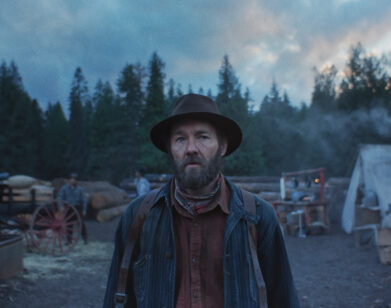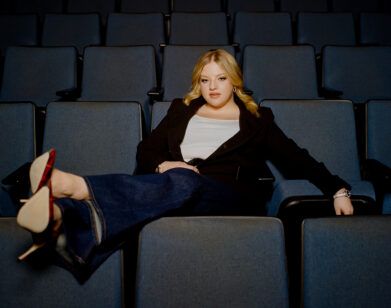Out with Bulle Ogier
“Since the movie is 12 hours long I’m sure that we have a million things we’d like to discuss.” Calling from Paris, veteran French film and theater actress Bulle Ogier elegantly cuts to the chase.
Ogier, a longtime collaborator of Jacques Rivette, Marguerite Duras, and player for Buñuel, Fassbinder, and Assayas, is talking about Rivette’s OUT 1. The 1971 film from the prolific post-New Wave director is weighted with a mystique in part due to its rarity. Running just shy of 13 hours, it never received a proper release. Even the name itself, with the subtitle noli me tangere (Latin for “touch me not”) tacked on, lands like a manifesto. Whatever the seemingly fixed points of the plot—two theater groups workshopping Aeschylus’ Prometheus Bound and The Seven Against Thebes; a deaf mute panhandler (Jean-Pierre Léaud) busking with a harmonica; a chestnut-haired grifter (Juliet Berto) running around Paris bleeding men of their money—their surface truths dissolve into a dense matryoshka of a story that deconstructs into a trance-like art object that is as much a meta-exercise in art-making as it is a politicized account of conspiracy and paranoia.
Rivette’s obsession with puzzles and conspiracies found a companion in Balzac’s account of a 19th-century secret society, History of the Thirteen, which serves as a loose narrative framework. He provided his cast with a script consisting of a diagram of intersecting characters and plot points; his actors, some of the New Wave’s most iconic, improvised the rest. Michael Lonsdale and Michèle Moretti are Thomas and Lili, directors of the two troupes whose intermittent stretches, warm-ups, and dialectics serve as a Greek chorus of sorts, until the narrative inverts and they become the core of the action. Colin (Léaud) intercepts cryptic notes that lead him to the Balzac text and eventually Thomas, as well as to a hippie shop run by Pauline (Ogier), who also goes by the name Emilie, a young mother in hot pursuit of her missing husband, Igor. Frédérique (Berto) enters the fray, as do a network of others, weaving in and out of each other until the film’s shattering wound-up conclusion. Created in the upheaval of post-May ’68, OUT 1 is a document of the era’s search to unpack the artistic id. The film takes on bohemian excess in a way that translates to today in the quaintest, most luxuriously compelling way—much screentime is devoted to posturing philosophical discourse, lighting cigarettes, calling for wine, and endless ruminations on thoughts and feelings.
For its worldwide premiere, a new digital restoration of the complete film, divided into eight episodes, will screen at BAM starting on Wednesday and running until November 19th. Interview spoke with Ogier, now 76, last week via a translator.
COLLEEN KELSEY: Bulle, when did you realize that acting was something you wanted to do?
BULLE OGIER: I was very close to a friend who ran a theater school when I was young. I was 19, and at the time I had a job with Chanel. Actually, I didn’t want to be an actress. I just took classes. That friend, he pushed me to pursue an acting career. I was very young, I had gotten married and I was already divorced by the time I was 20, and he said, “Look, you’re not really sure what you want to do with your life. You’re good at this. You should really pursue that.” At Chanel I was just putting stuff back in the shelves and feeding the models, so it wasn’t really interesting to me. After six months I quit that job and I pursued acting. Initially I worked as an amateur, and then at the end of the class, we had to do a final work that we had to present. At the time there were very important people that would come watch this final show, and the audience was very sophisticated. I realized that I was acting in front of such a refined, sophisticated audience, and there I was, being an actress.
KELSEY: When did you first meet Jacques Rivette?
OGIER: I met Rivette for the first time when he was working on his film La religieuse [1966]. He had summoned me because he had wanted me to audition for the role of the nun, which was played by Anna Karina. At the time I was rehearsing a show with my group at the American Center, where I was working earlier. It was a really interesting group with Jean-Pierre Kalfon and Pierre Clémenti. I told Rivette that I was busy with that, and I wasn’t sure what to do. He told me right away, “Look, it’s much more important for you to continue what you’re doing with your theater group than this role could ever be.” It must have been 1965.
KELSEY: Beginning with L’amour fou [1969] you and Rivette embarked on a long-term artistic collaboration. Why do you think the combination of you two made such a strong pairing? What was your creative process like?
OGIER: Rivette had contacted Jean-Pierre Kalfon and other elements in the theater group. He was actually watching us all along. Many intellectuals in Paris would come watch; several distinguished filmmakers would be in the audience, and the writer Jean Genet. Having said that, us actors had no idea. We were just doing our work, and we weren’t really conscious of what it was at the time. But it was, so to speak, trendy, or an object of curiosity. It was the thing that people interested in theater “had to watch” at the time in France. We were doing something that no one else was doing. So Rivette was one of our most loyal followers. When he asked Jean-Pierre to work with him, Jean-Pierre and I had already acted in five theater shows together and we had a strong connection already. It just came natural for him to ask me to be his partner in the movie.
The set designer at the time was Marilù Parolini. She was also a photographer and took all the photos for Cahiers du Cinéma. At the time Jacques Rivette was the editor-in-chief of Cahiers. The two of them had a love relationship. I can talk about it because it’s very well known; I’m not revealing any secrets here. The two of them had been together and it was very intense. They had just broken up, and in my own personal life I had just ended an important relationship with the father of my daughter. There had been other men, so I knew a lot about failed love relationships, and Jean-Pierre as well. We were able to draw on our own personal experience to put into our work, so that’s what allowed us to work so well together. We all sat with Jacques, Jean-Pierre, and Marilù, and we all used our experiences. That’s how it was able to be so strong and intense. Actually, that movie is still my favorite one I’ve worked on. That was the beginning of our collaboration. Collaboration sounds like such a big word, but we were working well and that’s how it started.
KELSEY: And on Céline and Julie Go Boating [1974] and Le pont du nord [1980] you are also credited as a screenwriter, so the process seems completely immersive.
OGIER: It’s true, he included [Ogier’s daughter] Pascale and myself as co-writers [on Le pont du nord], and in OUT 1 he included me not only as an actress, but as a creator, really. In Céline and Julie Go Boating, he allowed Marie-France Pisier and myself to basically create everything by including a lot of personal material in it. It must be said that Rivette is really incredible in giving actors the opportunity to really build their own characters, allowing them to choose their own clothes, their own hair-dos, and even placing actions in places that they love. It usually does work, but there are cases in which it doesn’t work. When he was done with the movie he did with Maria Schneider and Joe Dallesandro [Merry-Go Round, 1981], it didn’t work at all. Neither Maria nor Joe Dallesandro nor Jacques managed to create something that worked. He considers it a failed movie.
KELSEY: Let’s talk about OUT 1. What did you think of the idea for the film when Rivette proposed it?
OGIER: It was a time when the most eccentric things just came off as natural in every domain: in art, in the way people behaved. Things that would now be considered very eccentric at the time, passed as just natural. The first time he told us we were at Les Films du Losanges, which was a small production company, and we were all sitting around and we asked him, “So what’s this movie about?” And he was like, “I have no idea. I don’t know,” and he was laughing, laughing, laughing. The one thing he did tell us is that it was going to revolve around the idea of secret societies, secret groups. It was sort of his thing, his fixation, and source of inspiration. The thing he did mention is that History of the Thirteen by Balzac was going to be the starting point.
KELSEY: I read that the script was a diagram with characters connecting at various plot points, but that the major characterization was improvised by all of the actors.
OGIER: Well, the one thing he had told me is that I had to follow the story of [Balzac’s] The Duchess of Langeais, which was something that was very important to him. In fact he ended up doing a movie with Guillaume Depardieu and Jeanne Balibar [in 2008]. He told me that I was going to loosely follow that story and that my love interest, which was Jean-Pierre Léaud, was going to be following the role of the love interest of the Duchess of Langeais in that story. That didn’t happen because it was a wild improv work. In the improv that just didn’t fit, it was not going to happen.
It was completely improvised. We had no idea what had happened the day before to the other actors, we didn’t know what was going to happen the day after. I think the only two characters, which for me were a strong thread that could be followed, were the characters by Juliet Berto and Jean-Pierre. As far as Juliet was concerned, she knew she was a kleptomaniac and she was childish. Actually, I saw the movie again myself last week after forty years. It’s been that long, and this childish nature in her character is something that really stood out for me in my recent viewing. She was so beautiful in that, and I think she was never filmed so beautifully by anyone else. Even in [Godard’s] La chinoise [1967] she’s not that beautiful. It was really amazing the way Rivette made her stand out. Léaud’s character, he knew he was deaf and dumb, and he had this harmonica, and Juliet had her kleptomaniac nature, so they both had something to do. Whereas for us, the “Thirteen,” so to speak, we hadn’t even read the Balzac work, and we had to make it work.
KELSEY: What was your direction for finding Pauline-slash-Emilie? The character is doubled, as she’s living a secret life.
OGIER: Pauline is in the boutique, and Emilie is the woman in the secret society. As far as Emilie is concerned, there’s always this important character of Igor who everybody talks about, but he is never there. He is actually never shown in the film. He is mysterious and extremely important and he is Emilie’s love interest. I think that the great explanation of the movie is the one provided by Éric Rohmer when he talks to Léaud about Balzac. That’s the explanation of the movie, in those words.
Pauline had the cover of the store called L’Angle du Hasard [The Corner of Chance], and it’s a place that I wanted to create myself. Rivette had asked us to create our own locations. In the store in the movie, people are planning to write a magazine, and it was very connected to the political events that were happening in ’68 in France. I was just back from a trip to the United States, my first visit, and I had flown to Singapore for something else and on the way back I came via L.A. and San Francisco. In San Francisco I had an opportunity to come into contact with what, at the time, was Berkeley’s counterculture, and I was very fascinated by what was happening. We didn’t have those things in France yet at the time, and those bookstores where people get together and drink tea and talk about the future and dreams and plan things. I wanted something that could be similar to that.
OUT 1: NOLI ME TANGERE WILL SCREEN NOVEMBER 4-19 AT BAM CINÉMATEK.

